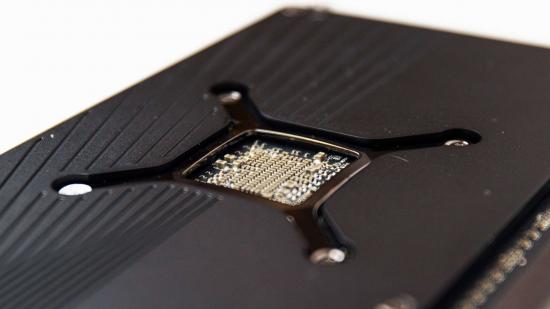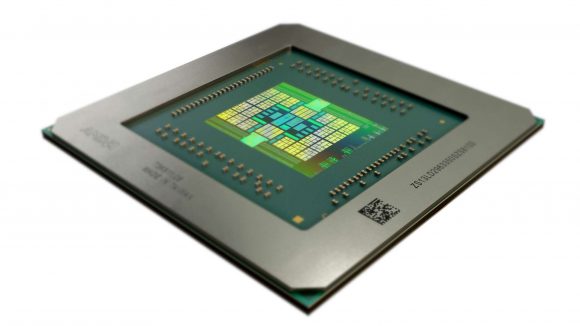After the announcement of the RX 5300 XT going into a HP desktop machine we’ve now seen an unreleased RX 5500 graphics card appear in the GFXBench database. So, now we know exactly how the new card will perform, right? After all, GFXBench must be able to give us reliable information and performance numbers.
Except no, it doesn’t. Frustratingly the GFXBench entry has barely any performance numbers in it and the ones it does don’t exactly offer a reliable snapshot of the RX 5500’s graphical power. Pretty damning for a testing database, right? But what it does do is at least confirm the existence of AMD’s next mainstream graphics card and the expected new Ryzen-like GPU tiers.
With the RX 5700-series already being launched with the RX 5700 and RX 5700 XT, we’re now expecting to see the RX 5500-series, and RX 5300-series filling out the range. As Scott Herkelman has promised us, this looks very much like the clear, “consistent model naming” that we were hoping for. And I’m sold. Intel kicked it off with the i3, i5, i7 with AMD following suit with Ryzen 3, 5, and 7, and now its Radeon cards are following the same consistent line too.
The new GFXBench entry was spotted by Twitter tech detective, Komachi, but there’s not a lot else we can really extrapolate from the listing. Even the info section is tough to parse, giving numbers for maximum atomic counter buffer bindings and fragment interpolation offset, among others (eight and zero if you’re interested), but I’m not smart enough to be able to coalesce any of those digits into hard specs. Answers to us on a post card if you are.
A post card? It’s an old-time-y analogue thing where you’d write something on the back of a photograph, stick a stamp on it, and mail it off. Stamp? Mail? Oh, come on people…
For our part, we’re pretty sure that the AMD RX 5500-series is going to be the range to house the Navi 12 GPU, with the RX 5300-series set to sport the Navi 14 silicon. That would put the RX 5500-series as the ones to replace the big Polaris GPUs – the RX 570, RX 580, and RX 590 – with the lower-tier cards coming into the value segment.
There has been some hope and hype that the Navi 12 chip would be the ‘Big Navi’ holy grail, but I’m not convinced AMD would have launched with the RX 5700-series first, knowing that it would replace it with something this quickly. I wouldn’t be surprised to see an RX 5900-series pop up next year, but I think we’re looking very much at the mainstream, volume end of the market going up to the end of 2019.
From previous CompuBench entries for the Navi 14 GPU we know that it’s rocking 24 compute units (CUs), which translates into 1,536 RDNA cores, and we’re expecting the Navi 12 silicon to come between that and the full 40 CUs of the Navi 10 chip at the heart of the RX 5700-series.
If we were gambling humans then we’d put our money on the RX 5500-series having a top card, a Radeon RX 5500 XT if you will, that sports 32 CUs and 2,048 RDNA cores. That would give it the same core makeup as the RX 570, but ought to outperform it quite considerably.
Though if we were taking the GFXBench numbers as gospel you could argue that the RX 5500 is 53% slower than an RX 570. But then there are database entries in there which you could also use to suggest that the RX 5500 is 63% quicker than an RX 580. To be honest I don’t believe any of the numbers, but this feels like further proof the RX 5500 is coming, and if our recent digging proves true then the new mainstream Navi cards could be released before October 15 this year.

